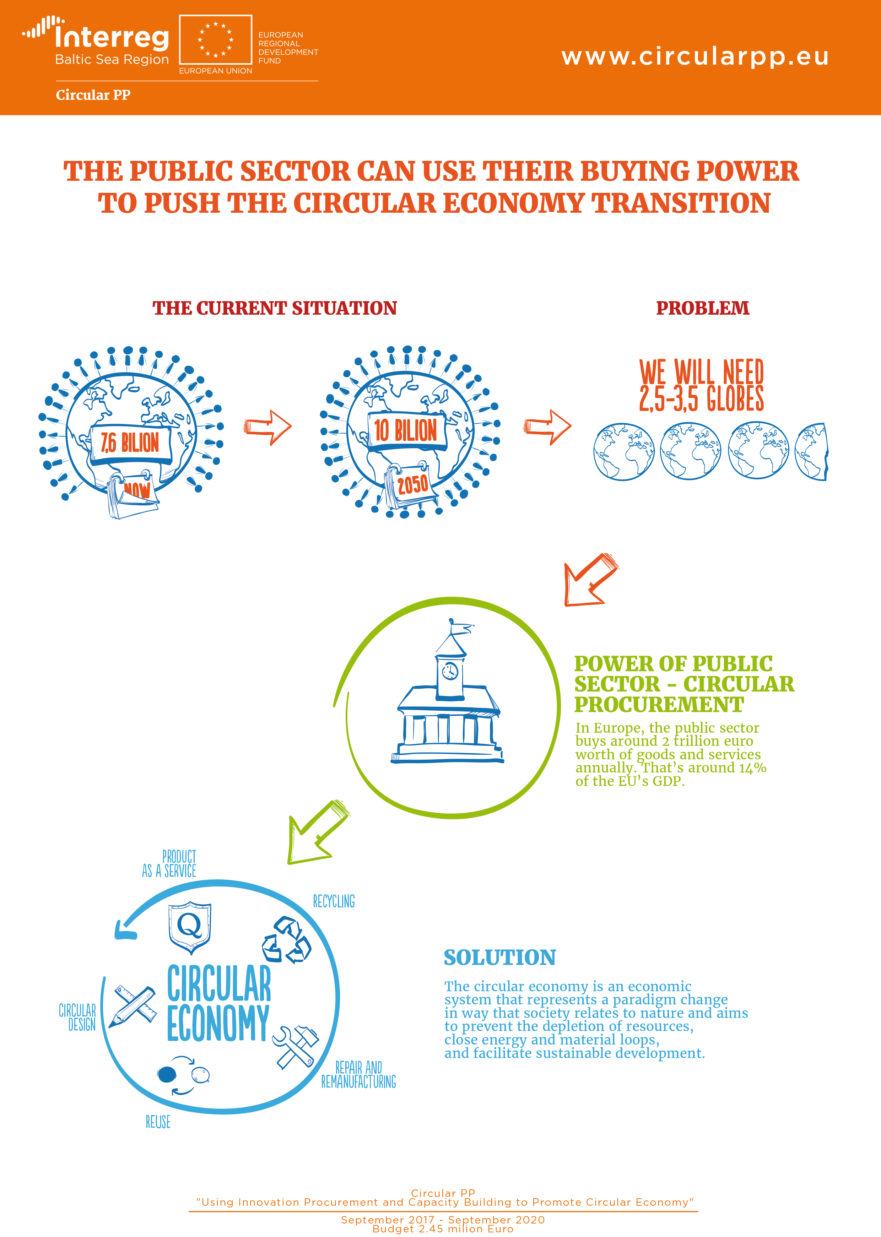Nowadays, 7.6 billion people live on earth, according to forecasts, this is expected to grow to 10 billion people by 2050. If we don’t change our approach to natural resources use, and don’t reduce the level of our consumption, we will need the equivalent of 2.5 to 3.5 globes worth of natural resources by 2050!
It is clear that cities need to take action to avoid such exploitation of natural resources, and one solution may be the use of circular procurement. This approach to purchasing is based on the principles of the circular economy, which can be defined as an economic system that represents a paradigm change in way that society relates to nature and aims to prevent the depletion of resources, close energy and material loops, and facilitate sustainable development [V. Prieto-Sandoval, C. Jaca i M. Ormazabal (2017)].



